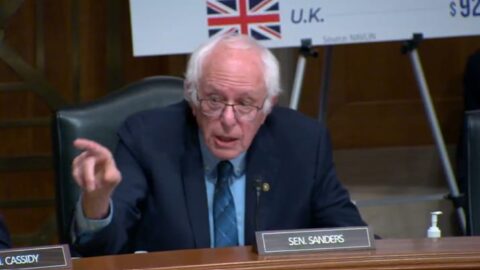There are two weirdly similar stories out today on how to shop thoughtfully for low-priced medicines, one from USA Today and one from the Boston Globe. These two pieces are of great interest to me because they’re … kind of lousy? I mean, the core advice isn’t bad, but it’s pretty simplistic, and generally only applicable to shopping for generic drugs, which is only one sliver of the issue.
My conclusion is that this reflects the generally shallow understanding of a lot of the press corps, especially the non-medical press. Those of us who write (or read!) daily newsletters about drug pricing probably don’t entirely understand exactly how limited most people understand even the basics of our system. It’s good to have a reminder of that.
Also weird: both pieces cite the same stat … the OECD number for per-capita spending on prescription drugs. It’s $1,432 in the United States, and, yes, that’s way higher than in other countries.
But what’s interesting is that if you put that number in other contexts — which the OECD site lets you do — you can come to radically different conclusions. For example, our spending on medicines as a percentage of overall health costs puts us somewhere in the middle of the pack, OECD-wise. And if you look at drug spending as a percentage of GDP, we’re not at the top of that list, either.
Sometimes, it really is all a matter of perspective.
We’re getting closer to the launch of the first Reid Strategic Launch Price Communication Report, which will look at every 2023 drug approval, how pricing was communicated, and how the media covered price.
As a warm-up, I’m sharing some snippets of the data from 2022 to give a sense of the ways that I’m looking at the topic. My first look at the 2022 data concentrated on which of the 14 outlets in my dataset were most likely to cover price at approval.
Today, I wanted to look at the top drugs for pricing coverage. I started with a subset of the 38 medicines that I was tracking: those that saw their approval covered by at least half of those 14 core outlets. From there, I looked at the percentage of the remaining coverage that included some mention of price.
Here’s what that looks like, graphically:
Again, this is a single data cut, which leaves out some granularity. Relvrio, which didn’t top the list when charted this way, had the most deep coverage of price, in no small part because Relvrio’s price came in below a much-discussed ICER estimate. Indeed, every story that mentioned Relvrio’s price put it in some kind of context. That’s in contrast to Sunlenca, next on the list, in which nearly all of the coverage included just a dollar figure with no additional details.
And it’s impossible to divorce media attention from how pricing is disclosed. Smaller biotechs face more pressure to be detailed and proactive about their exact price, which tends to make them easier to cover.
The corollary also holds true: just not mentioning anything does indeed minimize attention. There was no coverage of the price of Lilly’s Mounjaro diabetes drugs because Lilly didn’t release a price until later. There has never been any coverage, to my knowledge, of the price of Pfizer’s Cibinqo, presumably because the company has never mentioned that detail publicly. Unsurprisingly, there was no coverage of that price at approval, either.
(Quick editorial comment: the evidence is pretty strong that if a company doesn’t announce a price at approval, even if that price becomes public later, it can minimize the discussion of the topic. That might seem like a win, on the surface, but it contributes to a larger, dangerous narrative that prices are too high and too secret. That narrative has then been weaponized against industry. Also: there’s not a lot of evidence that talking about price harms companies. I know I’m talking my book here, but this is something I believe deeply.)
I’ll make information about discounted pre-orders for LPC and an overview webinar available in the next two weeks.
If you’d like more information about communicating around value and pricing ahead of launch, please drop me a line.
I’ve been consistent in my belief that if any of the IRA lawsuits claims are going to succeed, it’s the ones that accuse CMS of playing fast and loose with the implementation of the law. Those claims got a nice, neutral explainer in Health Affairs Forefront that is worth the read, especially given that these are the exact issues are going to be debated before a judge (in the AstraZeneca case) next week.
This is a good piece by STAT’s Ed Silverman on the history and future of the march-in rights issue. To be clear, it seems like the philosophical and legal objections to actually breaking patents will keep this whole mess from advancing, but if you want to know how we got here, it’s a strong read.
I think this Real Clear op-ed arguing for the 340B status quo is pretty weak sauce, but if you believe — as I do — that moving the pieces on the 340B chessboard is going to be a theme of 2024, it’s always worth seeing how the issue is framed.
I’ve given up on fully understanding gene therapy reimbursement, but I should flag this Modern Healthcare piece that reports that “Blue Cross’ Synergie Medication Collective” — which has access to about 10 million lives — will cover bluebird and Vertex’s gene therapies for sickle cell disease. I’m waiting for Courtney Rice’s take on this, and then I plan to “borrow” her opinion going forward.
If this email was forwarded to you, and you’d like to become a reader, click here to see back issues of Cost Curve and subscribe to the newsletter.





